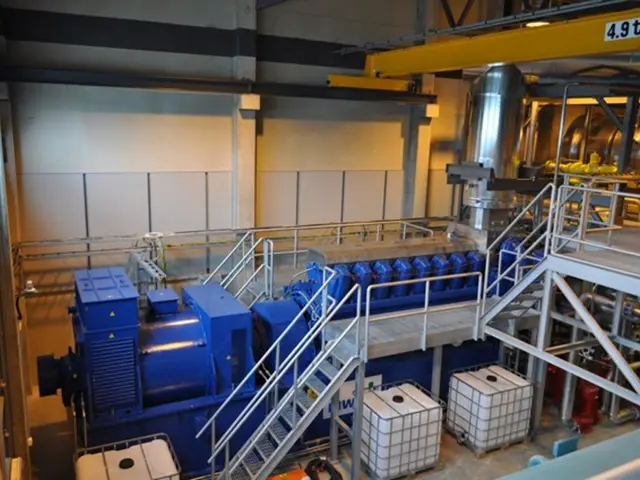Guide to Thematic Analysis: Uncovering Recurring Themes in Qualitative Data Analysis
Thematic content analysis (TCA) is an intriguing research method that combines the strengths of both thematic analysis and content analysis techniques. It allows researchers to systematically identify, analyze, and interpret themes within data, while also incorporating quantitative aspects to reveal patterns and trends.
TCA shares similarities with thematic analysis and content analysis, but it goes a step further by providing a hybrid approach to the analysis of qualitative data.
Dive deep into thematic content analysis
- Embrace a qualitative mindset: By focusing on identifying and interpreting themes, TCA offers an in-depth understanding of the nuances in the data and captures the richness of participants' experiences or perspectives.
- Anticipate quantification: Combine the inductive approach of thematic analysis with the ability to quantify data, allowing for a comparative analysis and mining of meaningful patterns within the data.
- Apply a rigorous process: Ensure transparency, reliability, and replicability of your findings by adhering to a systematic and rigorous approach.
Key features of TCA
Identification of themes
- Search for themes, patterns, or recurring ideas in the data, just as you would in traditional thematic analysis.
Coding process
- Assign codes to segments of data that represent relevant concepts, as in content analysis.
Quantification
- Count the frequency or prevalence of specific codes, allowing you to analyze the importance or prominence of different themes.
Systematic approach
- Follow a systematic and rigorous approach, similar to content analysis, to analyze the qualitative data.
For more in-depth guidance on conducting thematic analysis, consult our expertly crafted Thematic Analysis A Practical Guide.
When to use thematic content analysis
Researchers might opt for TCA when they wish to:
- Combine the rich, in-depth understanding of qualitative data from thematic analysis with the quantitative aspects of content analysis.
- Delve deeper into the nuances and patterns that might be overlooked without a hybrid approach.
- Add a quantitative dimension to identify and interpret themes, enhancing the reliability and robustness of the findings.
Thematic analysis vs content analysis vs TCA
Determining the appropriate approach for data analysis involves careful consideration of the research question, the nature of the data, and the desired outcomes.
Thematic Analysis
- Strengths: Uncovering deeper meanings and experiences within complex data.
- Focus: Emphasizes understanding the underlying structures and meanings in the data.
- Process: Involves coding data snippets and developing overarching themes to interpret the data's narrative.
Content Analysis
- Strengths: Accurately quantifying and categorizing elements in the data for measurable patterns.
- Focus: Confined to quantification and categorization of specific elements within the data.
- Process: Involves systematically coding and counting elements in the data.
Thematic Content Analysis
- Unique: Brings together the best of both worlds by identifying themes (thematic analysis) and quantifying their prevalence (content analysis).
- Process: Identifies themes qualitatively and then quantitatively analyzes their frequency within the data, offering a comprehensive understanding of the data's narrative.
In summary, thematic analysis uncovers the underlying themes or meanings within qualitative data, while content analysis focuses on quantification and categorization. Thematic content analysis attempts to offer the benefits of both, providing a more nuanced and multi-dimensional perspective on the data.
Streamline your data analysis journey
- Employ the rigorous and comprehensive approach of thematic content analysis to unlock valuable insights from your qualitative datasets.
- Gain a deeper understanding of the research topic through a hybrid approach that combines the inductive insights of thematic analysis with the comparative power of content analysis.
Expert help with thematic analysis
Unlock the insights in your data with the help of Best Dissertation Writers' skilled analysts. They specialize in conducting in-depth thematic content analysis, ensuring a thorough and systematic exploration of your qualitative data.
Get Started Here
In conclusion, thematic content analysis is an evolving approach that supports researchers in gaining a nuanced and multi-faceted understanding of their qualitative data. By combining the inductive strengths of thematic analysis with the quantitative aspects of content analysis, researchers can delve deeper into the data narrative, identify meaningful patterns, and derive more insightful conclusions. Be sure to consider TCA as you embark on your research journey, ready to grasp the rich, complex, and fascinating narratives that lie within your data.
- When researching education-and-self-development, one may consider employing thematic content analysis (TCA) writing services to gain a deeper understanding of the qualitative data through a hybrid approach that combines the inductive insights of thematic analysis with the comparative power of content analysis.
- To foster personal-growth and learn about different perspectives, engaging in a dissertation study using TCA can provide a valuable platform for the analysis of qualitative data, allowing for a systematic identification, analysis, and interpretation of themes within the data while also incorporating quantitative aspects to reveal patterns and trends.








